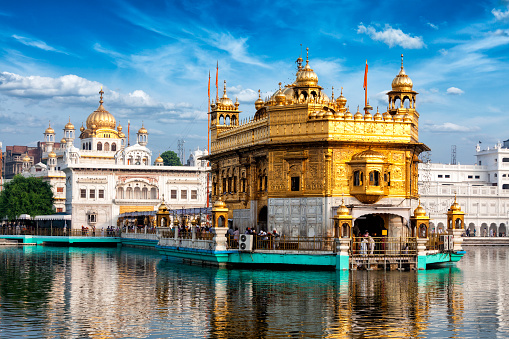The first experience I had at a temple was in China at the Po Lin Monastery, one of the most important temples in Hong Kong and home to the Tin Tan Buddha. It’s also known as the Big Buddha. Although I could complain about the stairs I had to climb, it was a small price to pay for the calming experience I had while praying at the temple. It’s probably one of the most iconic temples I’ve seen thus far.
If you’re interested in a similar experience, you should visit one of these famous temples around the world.
Jetavanaramaya, Sri Lanka
This temple contains over 10,000 Buddhist monks from Theravada and Mahayana, the oldest surviving branch of Buddhism. It was built in the fourth century with 93 million bricks.
Sri Ranganathaswamy Temple, India
Don’t be blinded by the golden towers and bold colors of this Hindu temple. It was dedicated to Ranganatha, a reclining form of the Hindu deity Maha Vishnu. The temple has 50 sub-shrines, 21 towers and nine pools, and about 800 inscriptions that shed light on the history, civilization, culture, and economy.
Temple of Heaven, China
The Temple of Heaven represents Heaven on earth, standing tall as one of the largest ancient temples in China. The circular walls represent heaven, while the rectangular wall is for the earth. It was built by the Ming Dynasty over 14 years, beginning in 1904.
This temple has endured a lot from surviving several earthquakes and a major fire, to still standing tall on top of a hill. “The Golden Roof” is one of the most famous Pagodas in the world and the biggest attraction in Yangon, Myanmar, constructed 2600 years ago.

Prambanan, Indonesia
Prambanan was built to honor the Hindu gods and mark the merging of the Hindu dynasty and Buddhism after Pramodawardhani married and became queen. Many believe this political marriage led to the temple being abandoned in the 18th century. The complex is divided into three zones, including a yard for priests and worshippers to pray.
Honor Guru Padmasambhava, the second Buddha, at the masked, religious Tsechu festival. Nestled in Bhutan, the temple was built where the second Buddha meditated for a long time. This prominent, sacred place is responsible for introducing Buddhism into Bhutan.
Wat Rong Khun, Thailand
Known as the “White Temple,” this temple represents the purity and sacredness of Lord Buddha and his wisdom, built with elements of Buddhist and Hinduism. It was constructed by Chiang Rai-born visual artist and painter Chalermchai Kositpipat. The temple comes alive each year at The Wat Rong Khun Light Fest. Notice the modern icons such as Superman and spaceships to tell the life and teachings of Buddha on murals.
A symbol of brotherhood and equality, the Golden Temple in India represents the heritage of the Sikhs. It’s known for its distinctive architecture, each entrance symbolizes the significance of people and equality.

Chionin Temple, Japan
This temple has traditional Japanese Gardens such as Yuzen Garden and Hojo Garden, designed by a monk in the 16th century. You can see it just over the Sanmon Gate- the largest wooden gate in Japan. Chionin’s main hall, the Miedo Hall, will remain closed to the public for renovations until spring 2020.
Watch the sun rise and set from the largest Buddhist temple made with over 1.6 million blocks of andesite. After many converted to Islam, the temple was abandoned, although the reason for the abandonment is unknown.
This temple is held as a space of purity, peace, and devotion, shown through various spiritual messages and architecture. Each soul that enters is potentially divine and each prayer is reflective of personal growth and a deeper connection to God. Over 8,000 volunteers participated in its construction.





